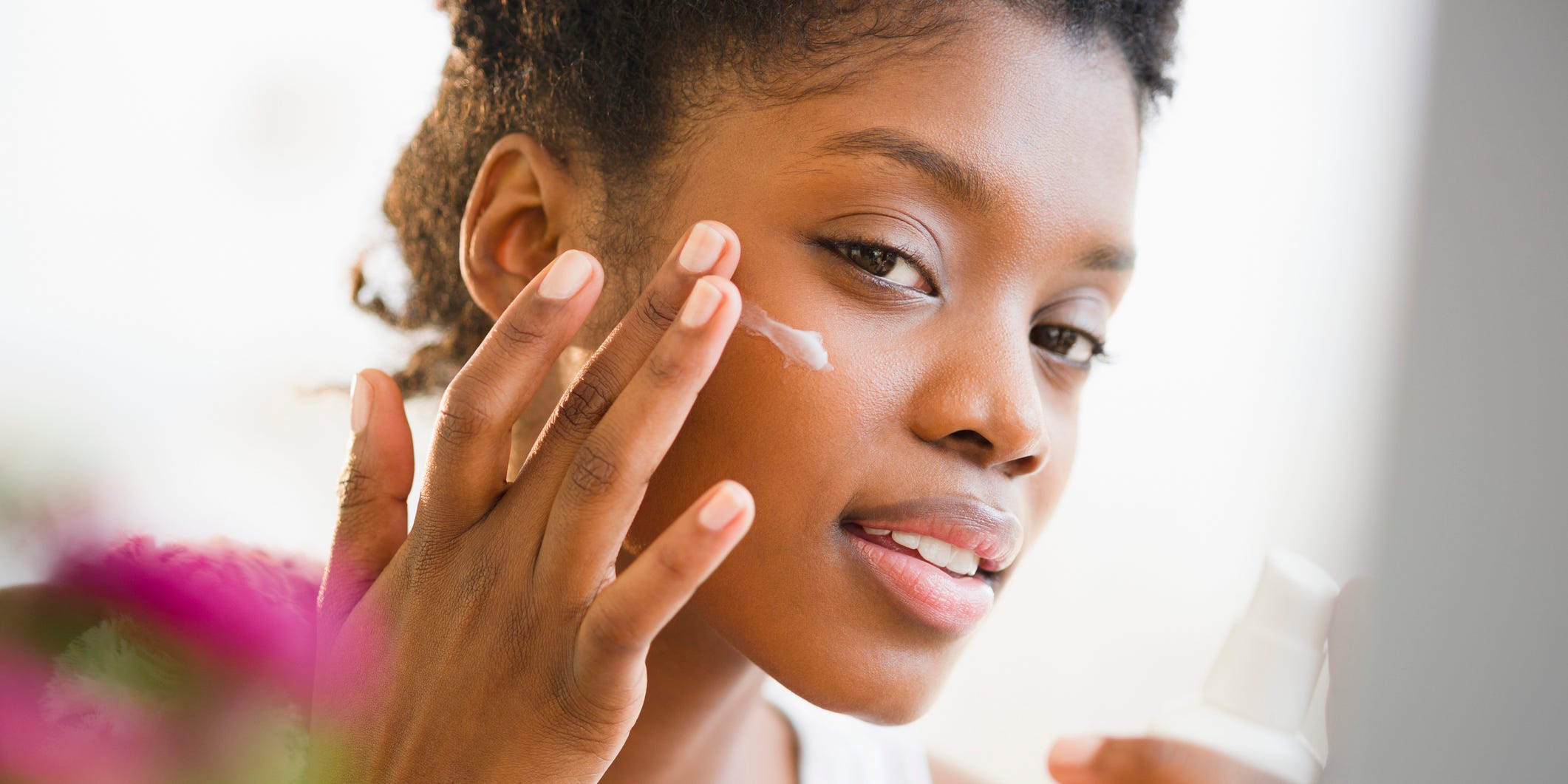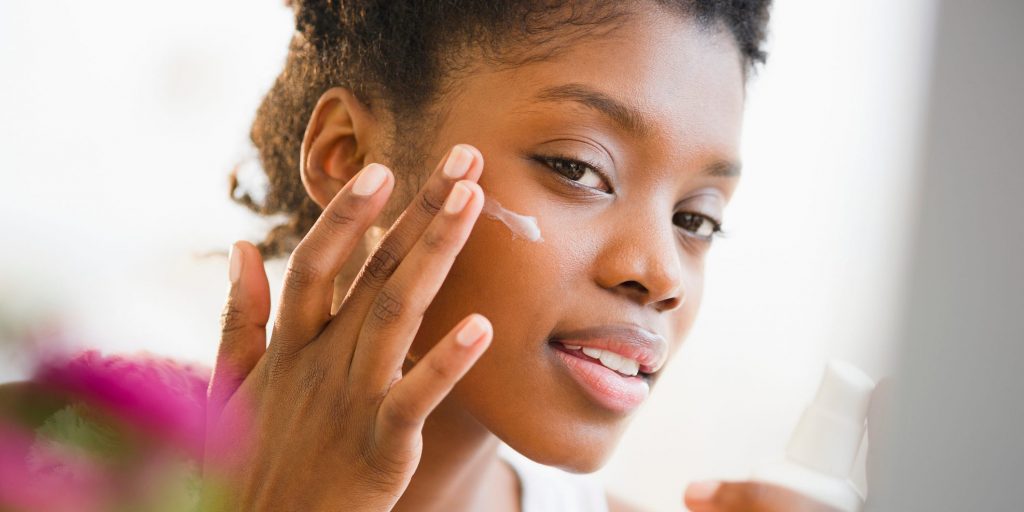
JGI/Jamie Grill/Getty Images
- The best sunscreen for your face is one labeled as broadspectrum with an SPF of at least 30.
- Facial sunscreens are formulated to look nicer on the skin and prevent breakouts or irritation.
- Mineral sunscreens for the face are good for sensitive skin because they contain fewer chemicals.
- Visit Insider's Health Reference library for more advice.
Some sunscreens are specially formulated for the face while others are for the body. However, they both do the same thing: protect your skin from harmful UV rays that can cause sunburns, premature aging, and skin cancer.
Many facial sunscreens are formulated to look and feel less greasy and are often more expensive than body sunscreens. But the higher price tag does not mean better protection, says Kimberly Jerdan, MD, a board-certified dermatologist at INTEGRIS Dermatology.
Here are dermatologist-backed tips on how to choose which sunscreen to use on your face.
Use a broad spectrum sunscreen with at least SPF 30
When shopping for any sunscreen, there are two key signs to look for:
- Make sure it says "broad spectrum" on the bottle.
- Choose a sunscreen with at least SPF 30.
Broad-spectrum means the sunscreen safeguards skin from both UVA and UVB rays. The difference between the two types of UV rays is that:
- UVA rays cause premature aging, like wrinkles and sunspots, because they penetrate deep into the skin and can damage its collagen.
- UVB rays mainly damage the surface of the skin and cause sunburns.
- Both UVA and UVB can cause skin cancer.
SPF (Sun Protection Factor) signals how much UVB radiation it filters. An SPF 30 sunscreen blocks 97% of the sun's UVB rays. A higher SPF only provides a marginal amount of additional protection and needs to be applied just as frequently - every two hours.
SPF does not measure how much UVA protection you're getting, which is why it's important to make sure the sunscreen is also labeled broad-spectrum, so you receive protection from both. "Higher SPF sunscreens tend to be a little more expensive, so I say, hey, save your money and just get in the habit of reapplying every two hours," Jerdan advises.
Choose sunscreen based on how oily or dry your skin is
Finding a facial sunscreen that works for you may involve a few trials and errors because everybody's skin is different.
If you have oily or acne-prone skin, Joyce Park, MD, a board-certified dermatologist, recommends looking for lotions labeled "non-comedogenic" because they won't clog pores, reducing the risk of breakouts.
Park also suggests sunscreens that contain niacinamide, a B vitamin that improves skin appearance and reduces the production of sebum, an oily, waxy substance meant to moisturize the skin.
For dry skin, she recommends looking for hydrating ingredients like ceramides, hyaluronic acid, or glycerin.
Apply sunscreen before makeup
While many makeup products like tinted moisturizers and foundations boast an SPF 30, they're usually not applied liberally enough to provide adequate sun protection.
"Studies show that people do not apply enough makeup with SPF to get the full sunscreen benefits, so we advise [applying] facial sunscreen prior to application of makeup containing SPF," Park says.
Face sunscreens are formulated to give different finishes-dewy, matte, or tinted-so there should be one that works for everyone and every makeup routine.
Use mineral sunscreen for sensitive facial skin
There are two major types of sunblock: physical and chemical. Both protect against UV radiation, they just use different ingredients to do so. And it's these ingredients that will help you choose the right facial sunscreen.
Physical, or mineral, sunscreens
Mineral sunscreens reflect the sun's radiation. They are formulated with zinc oxide or titanium dioxide, which are great options for those with sensitive skin because they are less likely to cause an allergic reaction. Jerdan says she likes to pick a mineral sunscreen that contains at least 9 percent of the active mineral ingredient.
Another reason mineral sunscreens are ideal for use on the face is that they reduce the risk of skin conditions aggravated by heat like hyperpigmentation and melasma. As chemical sunscreens absorb the sun's rays, they can warm the face, says Jerdan, so for those prone to discoloration, it might be best to avoid them.
"Mineral sunscreens can sometimes leave a thick, chalky residue on the skin," says Park. "But over the years mineral sunscreen formulations have become much more elegant and tinted so they no longer leave a white cast."
Chemical sunscreens
Chemical sunscreens absorb the sun's rays instead of reflecting them like their mineral counterparts. Jerdan advises her patients with sensitive skin to "say no to the benzones." Examples of benzones include avobenzone and oxybenzone, which are commonly found in chemical sunscreens and have the potential to ignite an allergic reaction.
However, not all chemical sunscreens rely on these ingredients, so you don't need to write all chemical sunscreens off completely. "[Chemical sunscreen] does a great job if you don't have an allergy to it," she says.
Chemical sunscreen ingredients are also controversial due to a recent study conducted by the FDA that showed that these compounds are absorbed into the skin and detected in the bloodstream in levels that surpass the recommended Food and Drug Administration threshold. Yet, researchers and dermatologists stress that this does not mean that chemical sunscreens are unsafe.
Choose sunscreens lotions for your face over sprays
Regardless of which route you go, the American Association of Dermatology recommends steering clear of sprayable sunscreens because it's difficult to know if a patch of skin has been left exposed.
Also, sprays should not be inhaled, so it might be better to stick to cream or lotion for the face.
Insider's takeaway
No matter what form of sun protection you choose, whether it's a spray, stick, or gel, just make sure you adequately lather up.
"The AAD recommends four passes of sunscreen sticks, and to spray sunscreen until your skin is glistening, and then to rub it in," says Park.
